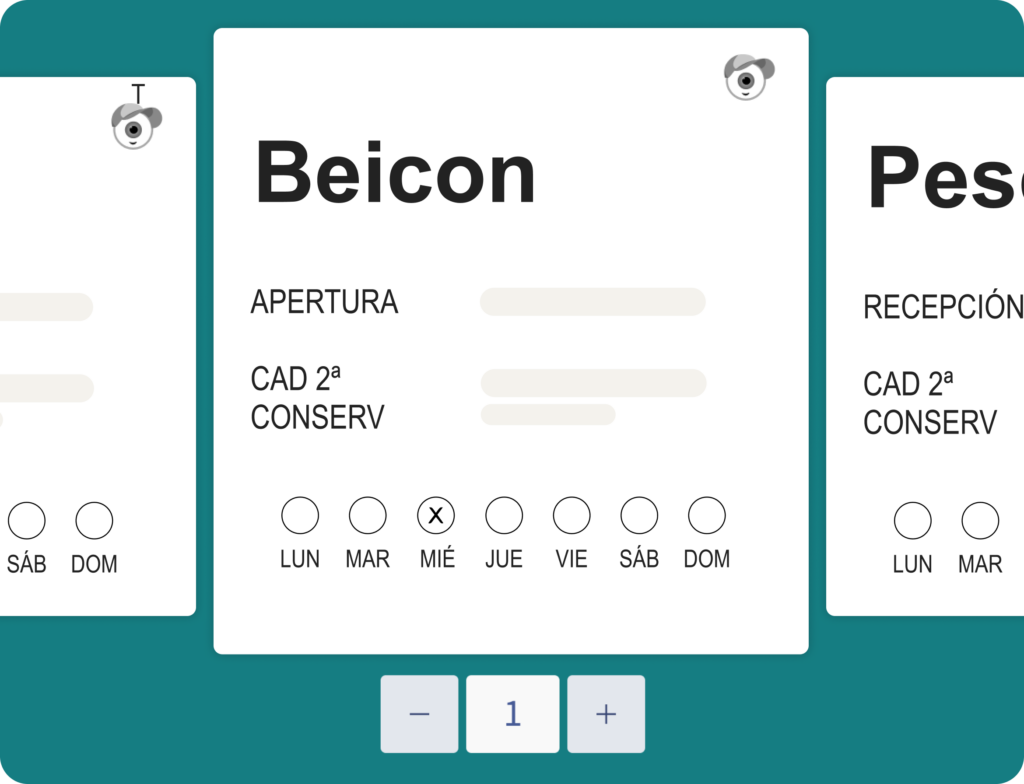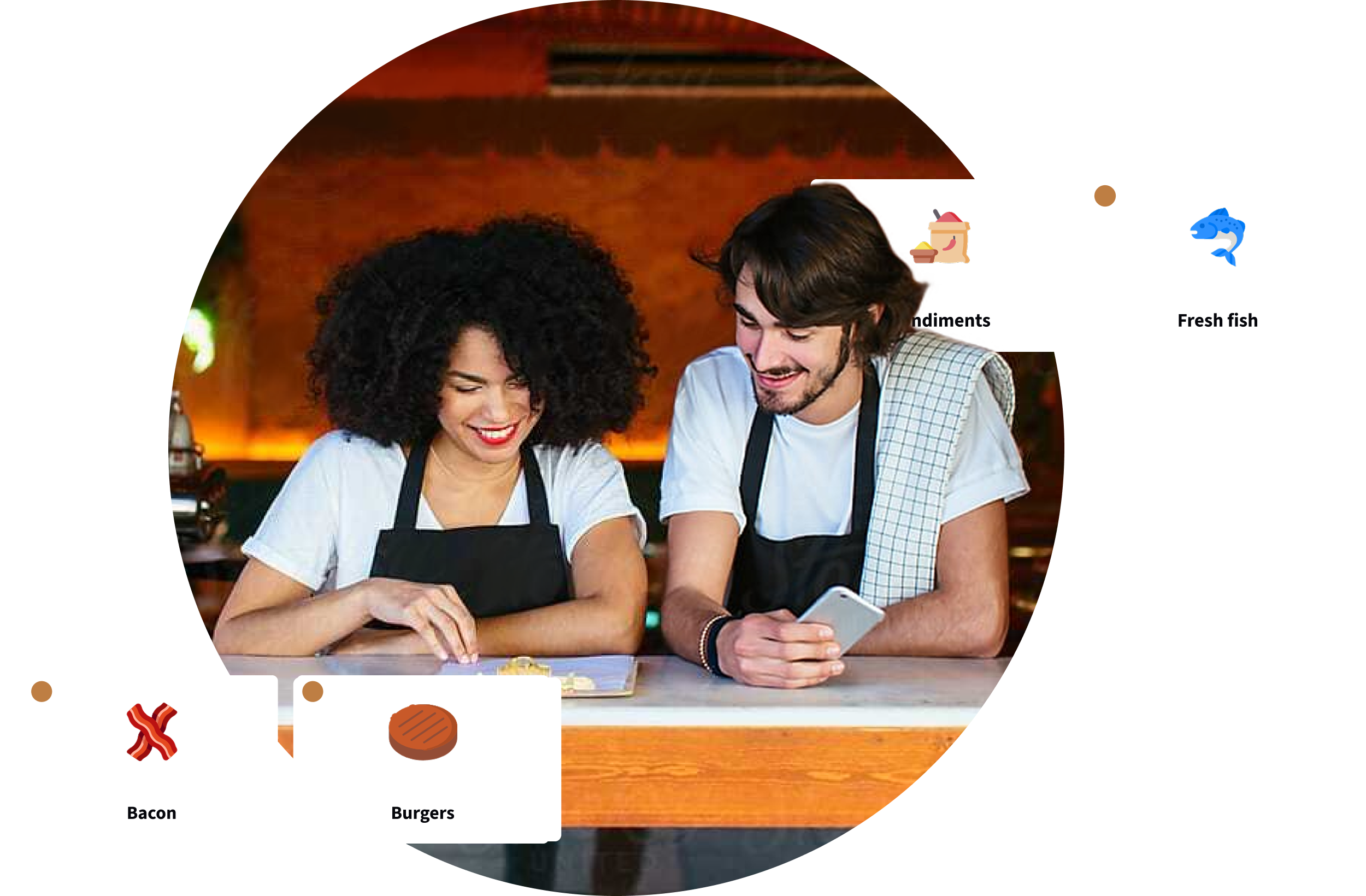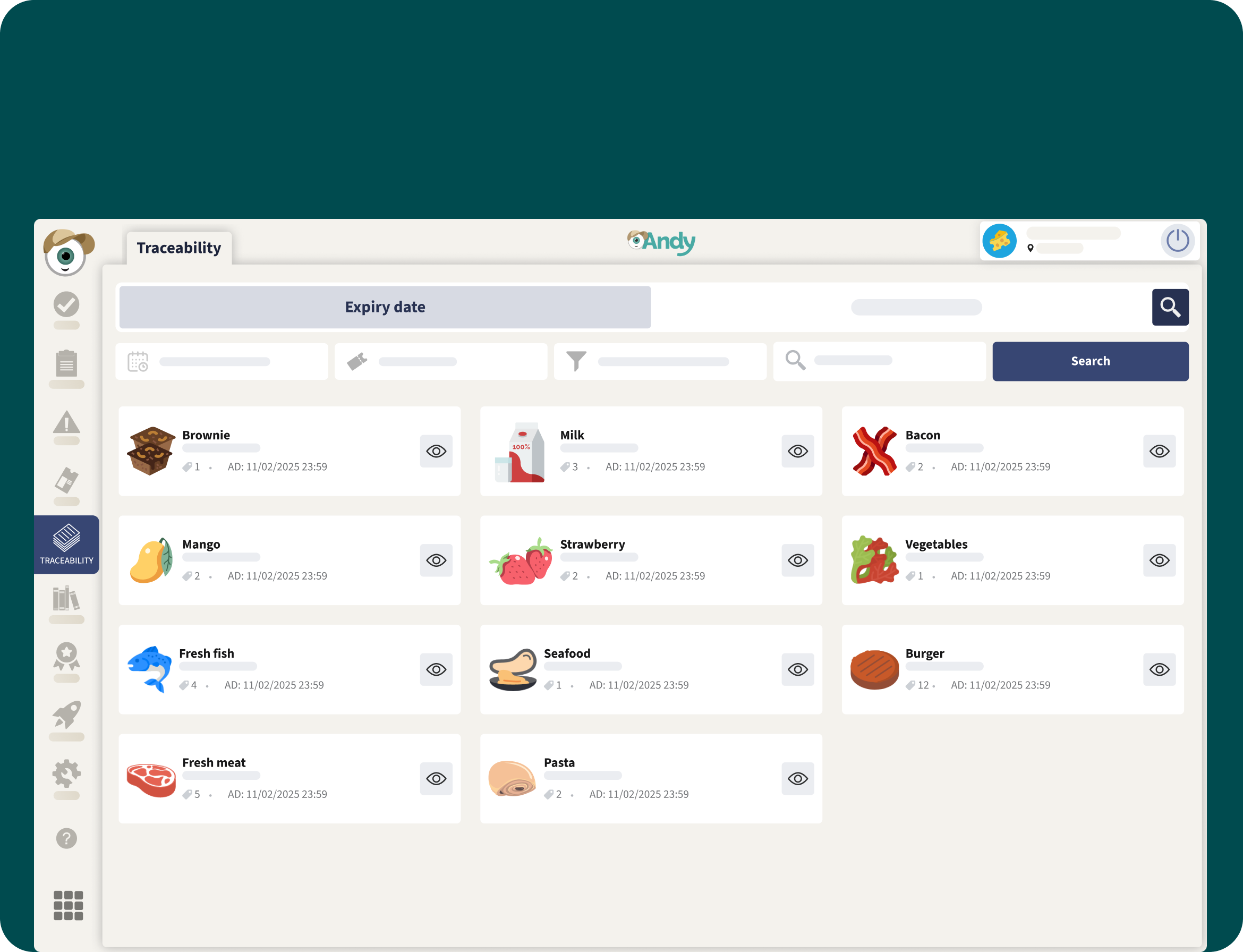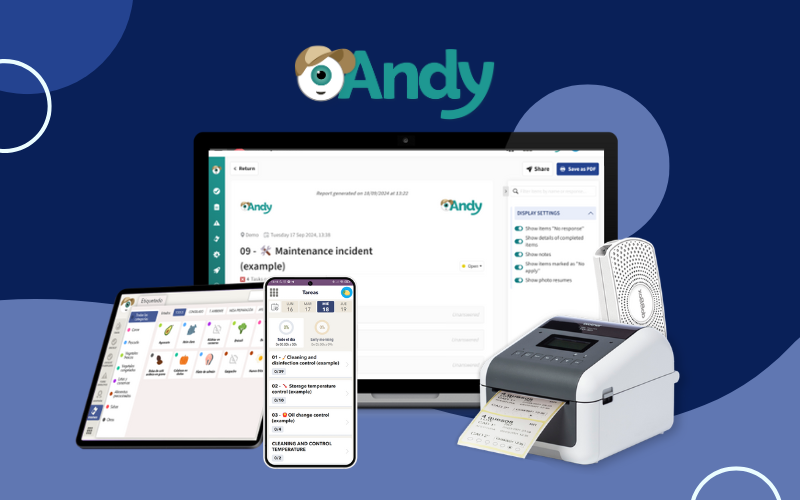How to Reduce Food Waste: Andy’s 2025 Mega Guide for Food Service and Food Retail Brands

How to Reduce Food Waste: Andy’s 2025 Mega Guide for Food Service and Food Retail Brands
How to Reduce Food Waste: Andy’s 2025 Mega Guide for Food Service and Food Retail Brands
Food waste is one of the defining challenges of our time.
According to the United Nations Environment Programme (UNEP), more than 931 million tons of food are wasted each year, representing 17% of food available to consumers worldwide.
That means that one in every three food items produced never reaches a plate.
For food chains, food retail brands, restaurants hotels, catering companies, and large food service operators, the issue is not just ethical or environmental – it’s financial.
On average, food waste represents 4–10% of food purchased by restaurants, often lost before it ever reaches the customer’s table. That translates into billions of dollars in lost revenue every year.
At the same time, customers and regulators are increasingly demanding sustainability, traceability, and transparency.
In 2025, reducing food waste is no longer optional: it is a key factor for compliance, profitability, and brand reputation.
This is where Andy, the leading digital assistant for food service, comes in.
Andy helps operators measure, prevent, and manage food waste through digital HACCP, automated labeling, smart checklists, and donation workflows – all designed to make kitchens safer, leaner, and more sustainable.
Find out how Andy can help you reduce food waste and a lot more in this Mega Guide.
Table of Contents
- The State of Food Waste Worldwide
- Food Waste in Food Service and Restaurants
- ✅Checklist: Common Causes of Waste in Restaurants
- Global Policies and Consumer Trends (2025)
- Five Key Strategies to Reduce Food Waste in the Food Service Industry
- Digitalisation with Andy
- The Impact of Food Waste: Economic, Social, and Environmental
- ✅ Final Checklist for Food Waste Management in 2025

The State of Food Waste Worldwide
The global picture of food waste is staggering, but understanding the scale helps us act more effectively:
- Global volume: 931 million tons of food wasted annually (UNEP, 2021).
- Share by sector: 61% from households, 26% from food service, 13% from retail.
- Economic impact: the global cost of food waste is estimated at USD 1 trillion per year (FAO).
- Environmental impact: food waste is responsible for 8–10% of total global greenhouse gas emissions – more than the entire aviation industry.
Beyond the numbers, food waste is also a social paradox: while billions of meals are wasted, nearly 735 million people worldwide face hunger (FAO, 2023).
💡 Did you know?
- If food waste were a country, it would be the third largest emitter of greenhouse gases after China and the US.
- The water used to grow food that is ultimately wasted could meet the annual water needs of 1.5 billion people.
- Reducing food waste is ranked among the top three solutions to mitigate climate change by Project Drawdown.
For the food service sector, this means every kilo of food saved is not just money retained, but also a step toward sustainability goals and a stronger social license to operate.
Food Waste in Food Service and Restaurants
Restaurants and large kitchens face unique challenges when it comes to food waste. Unlike households, the quantities involved are larger, and the risks are amplified:
- Overproduction: cooking more than what is sold, especially in buffets and high-volume outlets.
- Storage errors: poor temperature control, expired items, or lack of rotation (FIFO).
- Labelling mistakes: unclear or missing labels leading to premature disposal.
- Menu complexity: too many SKUs or dishes requiring specialised ingredients that spoil before use.
- Staff training gaps: lack of awareness about waste prevention among teams.
For operators, the cost is twofold: direct food costs plus indirect reputational damage when waste management is poor. According to WRAP (UK, 2022), the average restaurant wastes 21–35 tons of food per year, equivalent to tens of thousands of dollars in lost profit.
✅ Checklist: Common Causes of Waste in Restaurants
- No portion control or oversized servings.
- Poor rotation (FIFO not applied).
- Expired ingredients due to inadequate labeling.
- Menus with too many items and low turnover.
- Lack of donation or redistribution system for safe surplus food.
👉 By addressing these pain points with structured processes and digital tools, restaurants can significantly cut losses while meeting growing sustainability expectations.
Global Policies and Consumer Trends (2025)
Governments and consumers worldwide are raising the bar when it comes to food waste. What was once considered a back-of-house issue is now at the center of public policy and consumer choice.
- European Union: the EU has set mandatory targets to cut food waste by 50% by 2030 under the Farm to Fork Strategy, requiring member states to measure and report food loss.
- United States: the USDA and EPA are driving the Food Loss and Waste 2030 Champions program, engaging major corporations in voluntary reduction commitments.
- France: since 2016, supermarkets are legally banned from destroying unsold food and must donate it to charities.
- Italy and Spain: have passed laws encouraging and in some cases mandating food donation.
- Latin America & Asia: Brazil, Colombia, Mexico, and Japan are strengthening frameworks around prevention, food banks, and redistribution.
On the consumer side:
- Studies show that more than 60% of diners globally now consider sustainability when choosing where to eat.
- Millennials and Gen Z, who represent the future workforce and customer base, consistently prefer brands that act responsibly.
In short: waste management has become both a compliance requirement and a competitive advantage.

✅ Five Key Strategies to Reduce Food Waste in the Food Service industry
To tackle food waste effectively, restaurants and food service operators need to act on multiple fronts. The following five strategies have proven to be the most impactful:
- Smarter inventory management → demand forecasting, stock rotation, and supplier control.
- Accurate labelling and traceability → avoiding premature disposal and ensuring safety.
- Menu design and portion control → balancing variety with efficiency.
- Donation and redistribution programs → turning surplus into social impact.
- Digitalisation with Andy 🧢→ integrating all of the above in one platform.
These strategies not only help reduce food waste but also improve profitability, ensure compliance, and strengthen customer trust.
Strategy 1: Smarter Inventory Management
One of the leading causes of waste in food service is poor inventory control. From miscalculated orders to overlooked expiration dates, small errors add up to big losses.
Best practices for smarter inventory management:
- Forecast demand: use sales data and seasonal trends to adjust purchasing.
- Standardise receiving procedures: check temperature and condition at delivery, reject non-compliant goods.
- Apply FIFO rotation: First In, First Out to minimise expired stock.
- Track high-waste items: monitor which ingredients most often end up discarded.
💡 Did you know?
The World Resources Institute estimates that restaurants can save up to USD 14 for every USD 1 invested in food waste reduction, primarily through smarter inventory and staff engagement.
How Andy helps:
- Digital logs of supplier deliveries and temperatures.
- Automated reminders for expiration dates and FIFO rotation.
- Real-time dashboards to monitor stock levels and waste trends.
- Alerts when unusual consumption patterns are detected (e.g., an ingredient running out too fast).
👉 With Andy, inventory management shifts from reactive to proactive – helping teams reduce waste before it happens.
Strategy 2: Accurate Labelling and Traceability
Poor labelling and lack of traceability are silent but costly drivers of food waste. A box of chicken, a tray of salmon, or a batch of pre-cooked rice can end up in the bin simply because the team cannot confirm when it was received, opened, or how long it has been stored.
Why labelling matters:
- Prevents safe food from being thrown away prematurely.
- Ensures compliance with food safety regulations.
- Provides transparency during audits and inspections.
Best practices:
- Use labels that include date of reception, opening, freezing/defrosting, and expiry.
- Standardise formats across all locations in a chain.
- Train staff to understand the difference between “best before” and “use by” dates.

💡 Did you know?
Research shows that 20% of restaurant food waste is caused by mislabelling or misinterpreting date codes (WRAP, 2022).
How Andy helps:
- Automatic labelling with printers and templates linked to the app.
- Clear, standardised labels across every location.
- Digital traceability from delivery to plate.
- Quick reporting of shelf life, reducing errors and waste.
👉 With Andy, labelling becomes accurate, fast, and reliable – cutting waste while boosting compliance.
Strategy 3: Menu Design and Portion Control
Your menu design can make or break your waste management strategy. A complex menu with too many dishes increases inventory requirements and multiplies the risk of spoilage.
Common pitfalls:
- Carrying too many low-demand items.
- Oversized portions leading to uneaten food.
- Introducing seasonal items without adjusting purchasing.
Solutions:
- Menu engineering: analyse sales data to identify “waste-heavy” dishes.
- Reduce SKUs by focusing on high-performing items.
- Offer flexible portion sizes (e.g., half portions, small plates).
- Align menu planning with demand forecasting.
💡 Did you know?
Studies in the US and UK show that portion size adjustments alone can reduce plate waste by up to 30%.
How Andy helps:
- Connects menu items with inventory to spot dishes generating most waste.
- Provides data insights on ingredient usage across outlets.
- Supports decision-making on portion sizes and menu optimisation.
👉 With Andy, restaurants can simplify menus, optimise purchasing, and adjust portion sizes – all while enhancing customer satisfaction.
Strategy 4: Donation and Redistribution
Not all surplus food should end up in the bin. With proper systems, safe and edible food can be redirected to people who need it most. Donation not only reduces waste but also creates a social impact and strengthens your brand.
Best practices for donation:
- Partner with food banks and NGOs.
- Ensure compliance with cold chain requirements.
- Label donations clearly with dates and batch codes.
- Keep digital records for accountability.
💡 Did you know?
The Food and Agriculture Organization (FAO) reports that donating just 25% of the food currently wasted globally could feed 870 million people.
Checklist: Donation-Ready Process with Andy
- Surplus identified before expiry.
- Items labelled clearly for donation.
- Cold chain maintained during storage and transport.
- Donation logged with full traceability in Andy.
How Andy helps:
- Generates donation-ready reports.
- Provides clear labels and expiry tracking.
- Ensures donation traceability for audits.
- Integrates with corrective action plans if donations are delayed.
👉 Andy makes food donation safe, efficient, and compliant—helping restaurants turn waste into opportunity.

Strategy 5: Digitalisation with Andy
While traditional approaches -manual checklists, spreadsheets, paper logs -may have worked in the past, they are no longer enough to handle the scale and complexity of food service operations in 2025. Errors multiply, data gets lost, and teams lose precious time filling in paperwork instead of focusing on the customer.
This is where digitalisation becomes the game-changer, and where Andy shines as the leading solution for food service operators.
How Andy transforms food waste management
With Andy – leading digital food safety and operations assistant -, food waste management is no longer a burden. It becomes a transparent, efficient, and measurable process that saves money and builds trust.
- Andy digitalises every HACCP record, from temperature logs to cleaning schedules.
- Automatic alerts are triggered if any reading goes outside the safe range.
- Corrective actions are suggested instantly, guiding staff step by step.
Smart Labelling & Traceability
- Andy generates standardised labels with dates, batch numbers, and expiry.
- Labels are linked to the app, ensuring complete traceability of every product.
- No more guessing if an item is still safe: Andy tells you.
Donation Workflows
- Andy identifies surplus food before it expires.
- Items are tagged as donation-ready and logged for traceability.
- Records provide proof of compliance for audits and corporate social responsibility reporting.

Incident & Corrective Action Management
- Any deviation (temperature, labelling, waste spike) is logged as an incident.
- Andy prompts the team with corrective actions in real time.
- All incidents and resolutions are archived, creating a digital “black box” for your operations.
Training & Knowledge Hub
- Andy integrates videos, manuals, and microlearning modules.
- Staff can quickly access instructions on waste prevention, labelling, or donation protocols.
- Training completion is logged, creating a culture of accountability.
The Impact of Food Waste: Economic, Social, and Environmental
Reducing food waste is not just about saving money (though the savings are significant). It is about understanding the full spectrum of impacts.
Economic Impact
- The global cost of food waste is estimated at USD 1 trillion per year.
- In restaurants, waste can represent up to 10% of food costs, directly affecting profitability.
- Studies show that for every USD 1 invested in reducing food waste, restaurants save USD 14 (WRI).
Andy’s role: By reducing errors, optimising inventory, and tracking waste, Andy helps operators recover margins that would otherwise be lost.
Social Impact
- While restaurants discard tons of edible food, 735 million people worldwide still face hunger (FAO, 2023).
- Food donation programs can redirect surplus to those in need, but they require proper safety and traceability.
Andy’s role: Andy ensures that donations are handled safely, with full records of temperature, expiry, and chain of custody. This makes it easier for restaurants to partner with food banks and NGOs.
Environmental Impact
- Food waste contributes to 8–10% of global greenhouse gas emissions.
- Wasted food also means wasted resources: land, water, energy, and labor.
- If food waste were a country, it would be the third largest emitter of CO₂ after China and the US.
Andy’s role: By cutting waste, Andy directly reduces your environmental footprint – helping restaurants align with sustainability certifications, ESG goals, and SDG 12.3 (halve food waste by 2030).
✅ Final Checklist: How to reduce Food Waste in 2025
- Do you measure and record food waste daily?
- Are your teams trained in prevention, labelling, and donation protocols?
- Do you use standardised labels for all products (date, batch, expiry)?
- Have you partnered with a local food bank or NGO for surplus donations?
- Are your HACCP, labelling, and waste processes fully digitalised with Andy?
- Do you generate reports for audits, ESG, and sustainability metrics?
👉 If you answered “no” to more than two questions, it’s time to strengthen your food waste management strategy.
Food waste is no longer just an operational inefficiency – it is a strategic issue that touches every part of a food service brand:
- Profitability.
- Customer satisfaction.
- Compliance.
- Brand reputation.
- Environmental and social responsibility.
In 2025, the most successful food service operators will be those who turn food waste from a liability into a strength.
And the fastest way to do it is with Andy:
- Reduce food waste by up to 30%.
- Improve consistency across all outlets.
- Simplify compliance and audits.
- Boost sustainability credentials and customer trust.
🚀 Start your free trial with Andy today and see how digital food waste management
can transform your operations, reduce costs, and build a brand customers love.





